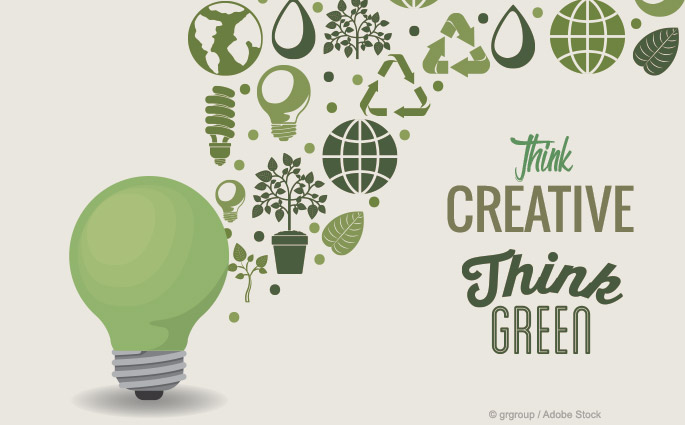
Models that encourage recycling behavior and sustainability initiatives in workplaces are blooming like wildflowers. That metaphor, blooming like wildflowers, is particularly apt when talking about sustainability. Wildflowers sow their own seeds for the next generation of blooms. Creative people in the workplace are bringing their passion projects to life with this same degree of efficiency and excitement.
When Levi Strauss started their recycling program, people were able to bring their old jeans into the stores to be recycled. It’s a feel-good system that is being replicated across the retail world. Recycle your jeans, feel good. Buy new jeans, feel better! Since that time, people have taken various models for recycling and sustainability and applied them to the fashion world.
Fashion, which used to be called clothing and before that, textiles, is teetering on the brink of disaster. Waste, pollution, enormous use of natural resources, unfair and unsafe labor practices: the weight of this industry’s bad behavior almost ruins the joy of shopping for new clothes. But creative people who have joint passions for sustainability and cool clothes are stepping up to offer alternatives.
The Danish company AMOV is combining timeless design, organic materials, safe and fair labor practices, with a new innovation: each article of clothing is tagged with the year in the life of the company it was made. So a t-shirt might have AMOV-1 and a hoodie AMOV-2. They are creating a cool-factor which will actually make older clothes more desirable. The timeless design and materials mean the clothing is likely to be around and worn for years, with the AMOV-1 tag carefully tended.
Sock-making geniuses XOAB are also tapping into the cool factor to boost sustainability by offering first edition, exclusive designs. Committed to transparency, they have a loyal and vibrant following by doing things like thanking, by name, the first, second, and third shift knitters in their sock-making mills. They talk about socks and how to design them and make them with the fervor of the committed, or those about to be committed, and their customers are passionate fans. Their unique team of office sock making design offer causes some offices to all wear their team socks to work on the same day. Some team-building exercises involve going out to lunch together, or maybe playing ball on the weekends. But for the sustainable fashionista, team socks are the bee’s knees.
Online platforms such as Zazzle are proliferating, giving amateur artists and hobbyists the ability to design their own t-shirts, sweatshirts, leggings, mugs, and more. Creative offices can tap into the passion of their people with sustainability or recycling design contests. A cool quote and an interesting design on an office mug might build excitement for recycling enterprises. Another option for team exercises is to have people research and present options for group support. These can be innovative companies trying to get crowdfunding, or team entrepreneurs hoping to support a project for the holidays. By tapping into enthusiasm and excitement, by encouraging people to support their kooky and creative passions, recycling and sustainability initiatives become one of the things employees like most in an engaged workplace.




































































































































 Three Ways to Engage Teams and Clients to Maximize Your Recycling Program Engagement
Three Ways to Engage Teams and Clients to Maximize Your Recycling Program Engagement  How to Integrate Accessibility Into Your Sustainability Planning
How to Integrate Accessibility Into Your Sustainability Planning  Why Park Benches Can Promote Workplace Well-Being
Why Park Benches Can Promote Workplace Well-Being 
